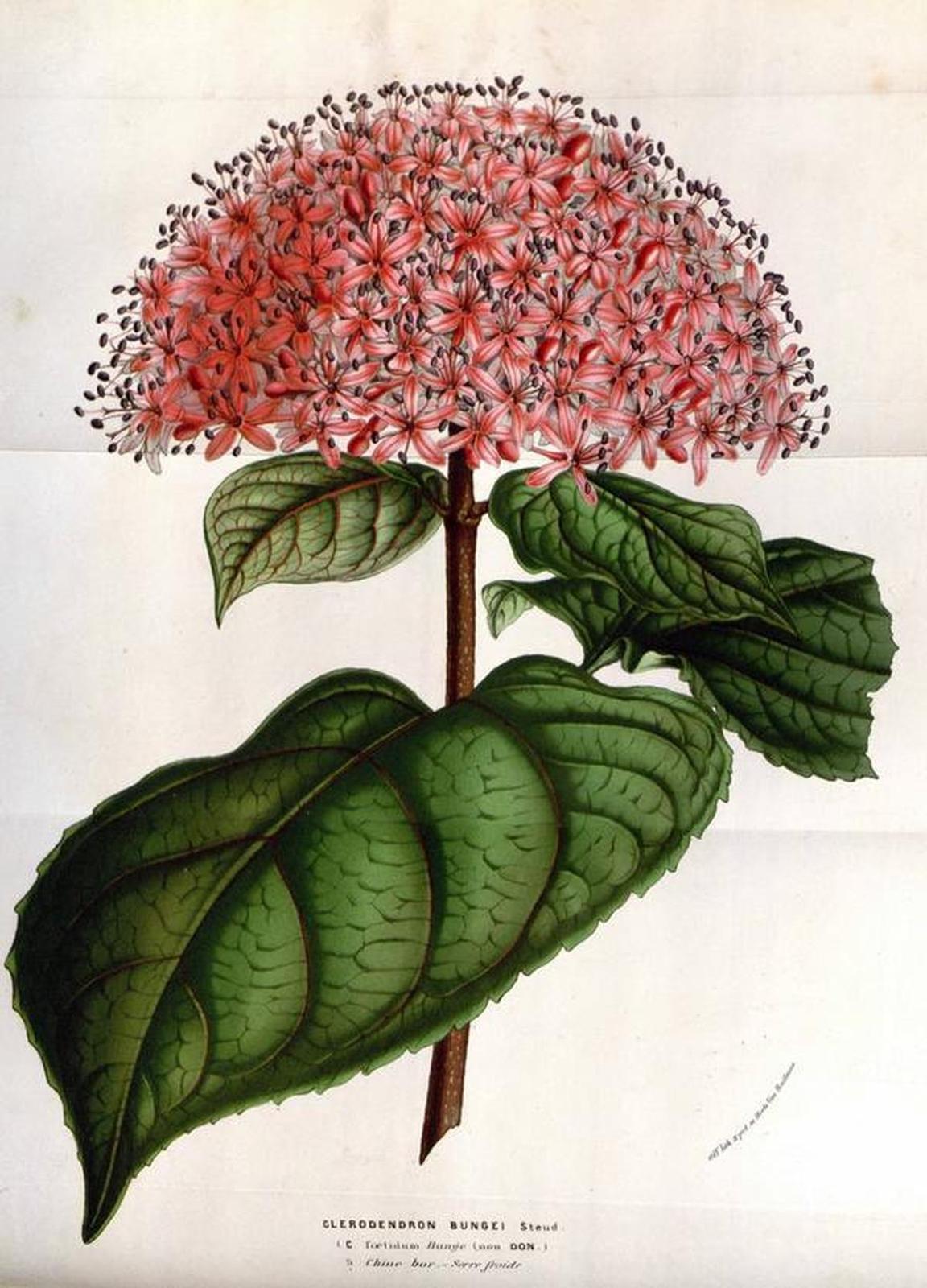Clerodendrum bungei Steud.
LamiaceaeEl nombre genérico de este arbusto deriva del griego kleros, que significa suerte, casualidad, y dendron, que significa árbol; la denominación de árbol de la suerte se debe a que algunas especies de este género poseían propiedades medicinales y otras en cambio eran muy venenosas, por lo que dependía de la buena o la mala suerte de la persona que acudiera a la planta para curar su enfermedad el que efectivamente el clerodendro la ayudara o por el contrario la hiciera empeorar. Su nombre botánico honra a uno de los grandes exploradores de Eurasia, Alexander von Bunge (1803-1890). Botánico de origen alemán, el viaje de Bunge al servicio de la Rusia zarista consistió en atravesar Siberia a través de Mongolia hasta Beijing, un inmenso territorio que todavía a comienzos del siglo XIX era prácticamente desconocido por los propios rusos. Los ejemplares de clerodendro del Real Alcázar se encuentran situados en el llamado Jardín Inglés, un jardín de tipo pintoresco diseñado por Juan Gras y Prats, jardinero de la Casa de Campo y diseñador de los jardines de la Magdalena de Santander a comienzos del siglo XX. Ocupando gran parte de la antigua Huerta de la Alcoba, Gras, para elaborar este peculiar jardín, hizo traer desde los Sitios Reales de la Granja de San Ildefonso y Aranjuez árboles de gran porte que todavía hoy se conservan, como los ginkgos o los cedros, orgánicamente dispuestos sobre un manto de suave verde recorrido por ondulantes senderos y adornados por notas de color provenientes de flores exóticas como los clerodendros, todo lo cual conforma un conjunto paisajístico único en la ciudad de Sevilla.
Procedencia
Oriental/AsiáticoCalendario
Hábitat
Morfología
 Arbusto
Arbusto
 Abanico
Abanico
 Simple
Simple
 Ovada
Ovada
 Obovada
Obovada
 Opuesta
Opuesta
 Dentado
Dentado
 Auriculada
Auriculada
 Cordada
Cordada
 Agudo
Agudo
 Caduco
Caduco
